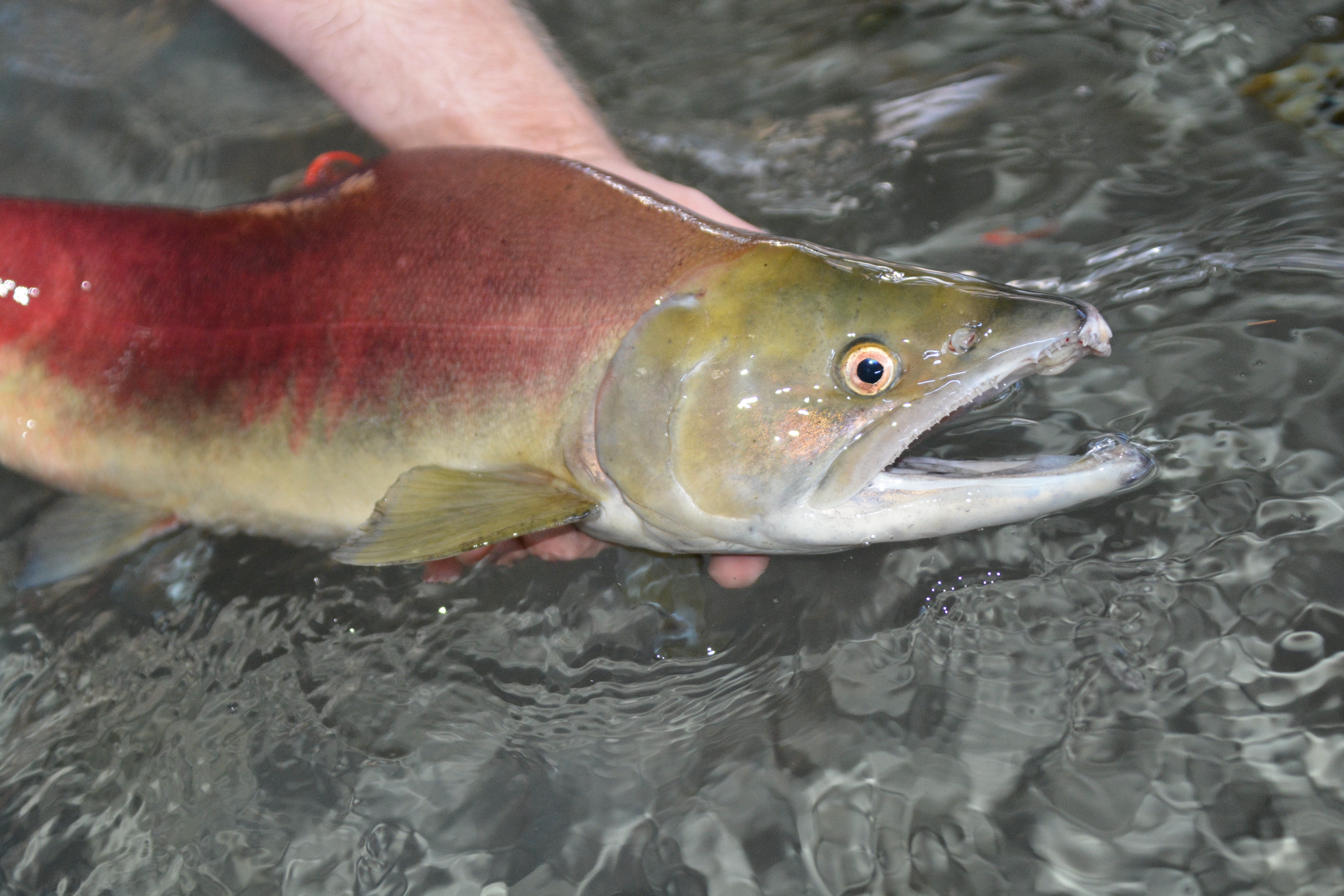
Photo by Roger Phillips, IDFG
Idaho Fish and Game biologists are monitoring this year’s sockeye return, river temperatures and weather forecasts in hopes of avoiding last year’s catastrophic conditions where 99 percent of the sockeye that crossed Bonneville Dam on the Columbia River died before reaching Idaho and their spawning grounds in the Stanley Basin.
So far, temperatures have remained suitable for sockeye migration, but there’s been a recent temperature spike in the Columbia River. Biologists are closely watching to see if it reaches similar levels to last year, which could prompt another round of trapping sockeye at dams downstream.
Biologists’ first choice is to let sockeye naturally migrate through the fishes’ entire 900-mile, 6,500-vertical-feet swim from the Pacific Ocean to their namesake Redfish Lake deep in Idaho’s mountains. But last summer, river temperatures were so lethal they opted to trap some sockeye and truck them back to Idaho to ensure fish were available for spawning.
“We’re really watching fish passage and river conditions this year,” Fish and Game fisheries staff biologist Russ Kiefer said. “Things are setting up to be another challenging year.”
In addition to water temperatures, Kiefer and other biologists will closely track key migration indicators, such as the time it takes tagged fish to move between dams, and the percentage fish over Bonneville Dam that successfully make it to the Snake River.
Perilous migration
Every year is perilous for returning sockeye. Since 2009, survival from Bonneville Dam on the Columbia – where the fish are first counted after leaving the Pacific – to the Stanley Basin, has ranged from a low of 1 percent last year to a high of 60 percent in 2010.
Each sockeye is important because unlike Idaho’s Chinook salmon runs that have averaged about 95,000 fish annually in the last decade, annual sockeye returns have averaged 993 at Lower Granite Dam about 25 miles downstream of Lewiston.
From there, sockeye still have another 400-mile swim to the Stanley Basin. Annual sockeye returns since 2008 to the Stanley Basin have averaged only 837 fish, which includes a record 1,516 in 2014 – the largest return to the Sawtooth Basin since 1955.
Platinum genetics
About 500 Idaho sockeye have passed through Bonneville Dam so far this summer, and biologists want them to complete their journey through the Columbia and Snake rivers and up the Salmon River to their spawning grounds.
The long-term goal, Kiefer said, is to have an Idaho sockeye population that is “healthy, self-sustaining and reproducing in the wild.”
While biologists want higher survival rates than 1 percent in the rivers, Kiefer described the 56 fish that completed the trip last summer as having “platinum” genetics in both hardiness and the timing of their return that maximized their odds of survival.
“The ones that made it back are the toughest of the tough, and they can pass that fitness to the next generation,” he said.
But Fish and Game biologists must also factor into the equation unusual river conditions like last summer and decide if it’s better to let nature run its course, or step in and ensure at least a portion of the run are available for spawning.
Trapping and hauling fish back to Idaho added 35 more sockeye available for spawning last year. Those fish had completed about half of the journey under very difficult conditions, which Kiefer described as “gold-level” genetics.
Ultimately, Fish and Game wants to have an annual sockeye run that completes an entire “life history” with fish being born and reared in lakes, migrating to the ocean and returning to spawn as adults. Research has shown those fish return at a higher rate as adults than their hatchery counterparts.
A critical safeguard
Kiefer pointed out that Fish and Game has additional insurance with its “captive brood stock” program, which are sockeye raised from eggs to adulthood in captivity to produce successive generations of smolts available to migrate to the ocean. The captive breeding program keeps two genetically identical populations in Eagle and Port Orchard, Washington.
A small portion of the eggs taken from captive adults, as well as some of the sockeye that return from the ocean, are used to rebuild the captive brood stock each year. The vast majority of the eggs are sent to hatcheries, including Fish and Game’s Springfield Hatchery in Eastern Idaho.
The Springfield Hatchery was built in 2013 with money from the Bonneville Power Administration, and it is used exclusively for sockeye production to increase the department's capacity to grow young sockeye for future releases.
Fish and Game released about 630,000 sockeye smolts from the hatchery during spring, and hatchery managers hope to reach Springfield’s capacity of 1 million smolts to be released in 2018.
